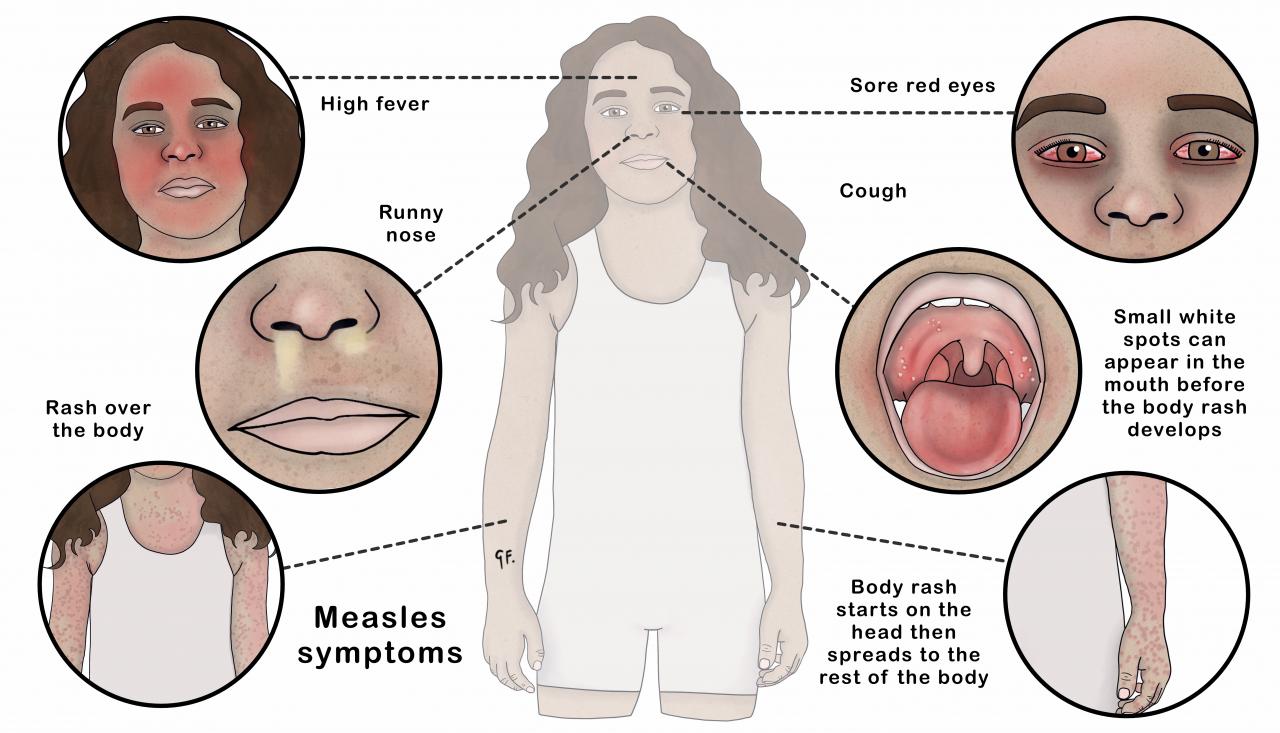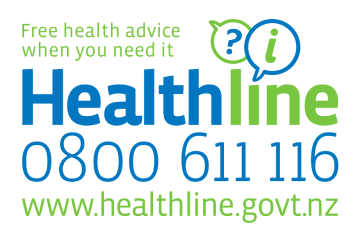Measles In Children
Measles In Children
Make sure your kids are immunised against measles. It takes around 2 weeks for the immunisation to protect you.
Key points to remember about measles
If you think your child might have measles, phone Healthline on 0800 611 116 or your family doctor as soon as possible for advice.
- measles can be a serious disease - it's caused by a virus
- measles is very easy to catch
- immunisation is the only way to prevent measles
- it takes about 10 days from contact with someone with measles to the first symptom
- if you think your child might have measles, phone Healthline on 0800 611 116 or your family doctor as soon as you can for advice
- don't go to your doctor's clinic without phoning first - measles can spread easily to others in the waiting room
- your public health service will tell you when your child can return to school or childcare
Check the information about measles immunisation
What is measles?
Measles can be a serious disease. It's caused by a virus. Measles spreads very easily from one person to another.
Measles is the most common vaccine-preventable cause of death in children around the world.
What are the signs and symptoms of measles?
Contact with someone with measles
It usually takes about 10 days from contact with someone with measles to getting the first symptom but it can take from 7 to 18 days. This is called the incubation period.
First symptoms
The illness begins with the following, which last for 2 to 4 days:
- high fever
- cough
- runny nose
- loss of appetite
- sore red eyes (conjunctivitis or 'pink eye')
You can sometimes see small white spots (Koplik spots) inside the mouth near the back teeth early in the disease, as in the photo.
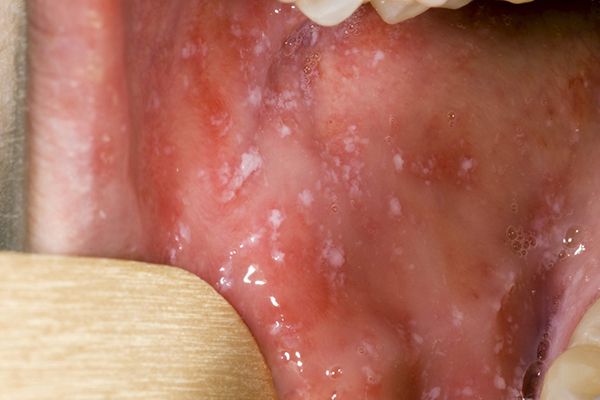
A rash
A rash follows and the white spots inside the mouth fade.
The rash appears on the head and gradually spreads down the body to the arms and legs. It lasts for up to one week.
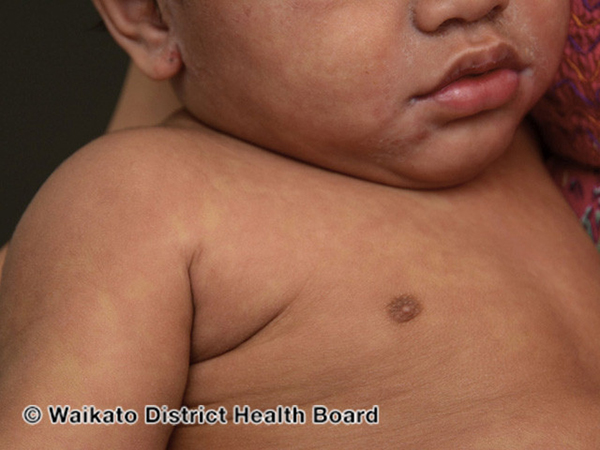
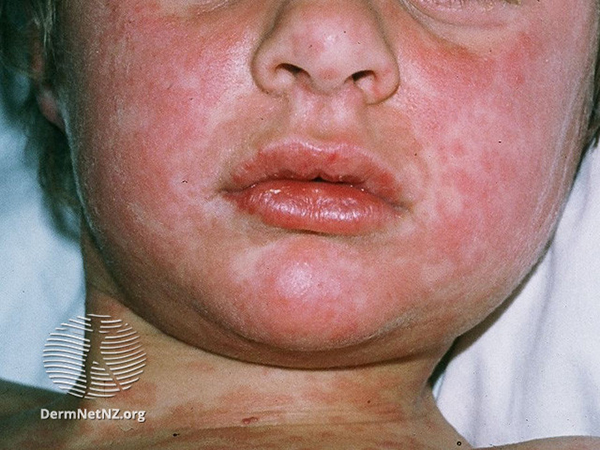
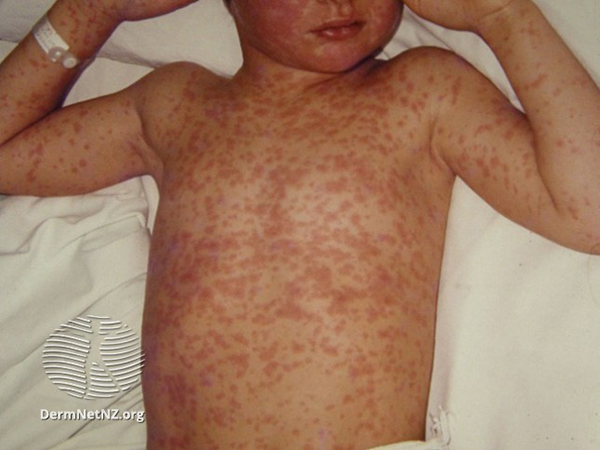
The infectious period
If your child catches measles, they're infectious (can spread the virus):
- for 4 days before the rash appears
- the day the rash appears
- for 4 days after the rash appears

Feeling unwell and miserable
Children usually look and feel quite unwell and miserable with measles. They are most unwell during the first day or two after the appearance of the rash.
How serious is measles?
1 in 10 people with measles will get complications.
1 to 3 out of 1,000 people with measles will die in developed countries.
1 in 10 people with measles will get complications including:
- diarrhoea
- ear infections
- pneumonia
- other diseases of the airways (like bronchiolitis and croup)
- ulcers of the eye (corneal ulcers)
- idiopathic thrombocytopenic purpura (low platelets)
Measles in pregnancy increases risk for premature labour, miscarriage and stillbirth.
1 in 1000 people with measles develop inflammation of the brain (encephalitis ) - 15 in 100 of these people die and approximately 30 in 100 are left with permanent brain damage.
1 in 100,000 people who have had measles will, years later, develop a serious brain inflammation called subacute sclerosing panencephalitis (SSPE). This serious complication always results in death.
Who is most at risk of complications from measles?
- children under 5
- adults over 20
- those with long-lasting (chronic) diseases
- those with a weakened infection-fighting system (immune system)
- those who are malnourished
How do you catch measles?
Measles is very easy to catch. It spreads through the air by infectious droplets through coughing, sneezing and talking, or by touching a surface with infected saliva or mucus.
Who is most at risk of catching measles?
Unimmunised children
All children who have not received at least 1 dose of MMR are at increased risk of catching measles.
About 90 to 95 in 100 people who receive one dose of MMR are protected. Those who do not develop immunity after the first MMR dose, almost always do so after the second dose. 2 doses offers the best protection.
Children with certain immune deficiencies
These children often can't have the MMR vaccine and rely on protection from those around them.
Pregnant women
Measles during pregnancy increases the risk of premature labour, miscarriage, and low birth weight infants.
Can I do anything to prevent my child catching measles?
Immunisation given on time is the only way to prevent measles. 2 doses of the measles, mumps, rubella (MMR) vaccine is 99 percent effective in preventing measles.
Check the information about measles immunisation
What should I do if I think my child has measles?
Phone Healthline on 0800 611 116 or your family doctor as soon as possible for advice. Make sure to phone your doctor before visiting. That way they can take steps to make sure you don't wait in a public area where other people might catch measles from your child.
How do I prevent measles spreading?
If your child has measles, you will need to keep them away from other people (in isolation). That means staying away from:
- daycare, early childhood services or school
- group and social activities
- sports and recreation events
- public places like cinemas and shopping malls
- work and community gatherings
You should only see people who are immunised aganist measles when you are in isolation.
Your child will need to stay in isolation until they are no longer infectious. The infectious period usually ends 5 days after the appearance of the rash. Your public health service or family doctor should give you advice about this. They should also give advice to people who have been in contact with your child and are at risk of catching measles.
What is the treatment for measles?
Because measles is caused by a virus, there is no specific treatment.
Antibiotics are not helpful for measles and your doctor won't give them to your child unless your child also develops a bacterial infection as a complication of measles.
In severe cases of measles, particularly when there are more serious complications, hospital treatment may be necessary.
How can I care for my child with measles at home?
Medicines
Give paracetamol for pain or discomfort if needed. You must follow the dosage instructions on the bottle. It is dangerous to give more than the recommended dose.
Never give your child or young person aspirin as this may increase the risk of Reye syndrome, which is a rare and serious illness.
Other things you can do
Give your child fluids often, to prevent dehydration.
Use saltwater drops (saline) to treat a stuffy nose - ask your pharmacist or family doctor for instructions.
Use damp cotton wool to clean away any crustiness around the eyes. Use one piece of cotton wool per wipe for each eye. Gently clean the eye from the inner to outer lid.
Keep your child at home and resting until they are well and your public health service advises that they can return to school or daycare.
When should I seek help for my child with measles?
When do I need to see a doctor urgently?
You need to see a doctor urgently if your child:
- is under 3 months old
- has trouble feeding or is not able to drink fluids
- is weeing less than normal (for babies, there are fewer than 4 wet nappies in 24 hours)
- has trouble breathing, has noisy breathing or is breathing fast
- is very irritable and is not wanting to be held
- is becoming less responsive
- develops a worsening headache
- has an unusual high-pitched cry
- looks unwell and you are concerned
- doesn't seem to be improving or you are concerned for any reason
When should I dial 111?
Dial 111 within New Zealand for urgent medical help (use the appropriate emergency number in other countries) if:
- your child becomes floppy, very drowsy or is difficult to wake
- your child's breathing becomes very fast or noisy
- becomes very pale or has blue lips or gums
A young person's experience of measles
Felicity Lyme, who had measles in 2011, talks about her experience of measles (Ministry of Health video)
This page last reviewed 28 June 2022.
Do you have any feedback for KidsHealth?
If you have any feedback about the KidsHealth website, or have a suggestion for new content, please get in touch with us.
Email us now